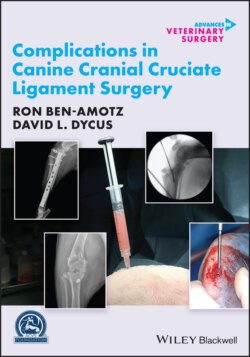Читать книгу Complications in Canine Cranial Cruciate Ligament Surgery - Ron Ben-Amotz - Страница 40
2.7 Conclusion
ОглавлениеOverall, TPLO has higher reported rates of SSI than other methods of stifle stabilization for cranial cruciate ligament ruptures (6,10,12–20,22,24,25). This may be due to the increased soft tissue dissection, thermal necrosis of the bone, and increased surgical times compared to extracapsular repairs. When compared to other tibial osteotomies, the overall higher incidence of SSIs may only be due to the increased frequency with which TPLOs are performed and thus reported.
As SSIs lead to further medical or surgical interventions, they have been identified to cause an increased financial burden for owners, along with increased morbidity for our veterinary patients [28, 88]. Despite the increased costs, protracted recoveries and increased patient morbidities, owner assessment of long‐term outcome was not significantly affected [23]. While not all risk factors can be controlled, many risk factors can be addressed with diligent surgeon and patient preoperative preparation. Additionally, active surveillance may help to improve the rate of identification of SSIs, which may lead to earlier interventions.
